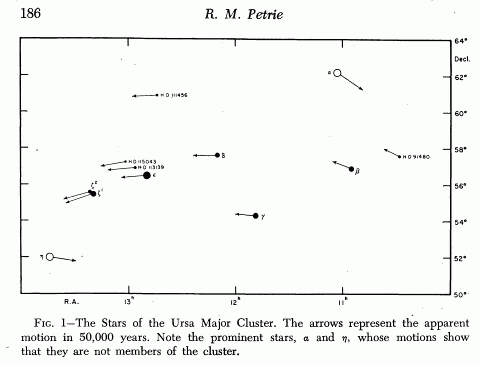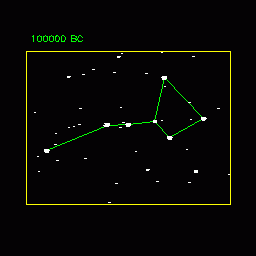The Ursa Major Cluster
Although there are many open clusters in our galaxy, one of the most commonly known by name is seldom mentioned. This is the Ursa Major Cluster.
Discovered in 1869, most of the stars in the Constellation Ursa Major (Big Dipper) are moving in roughly the same direction at roughly the same velocity toward Sagittarius (see the diagram on the left.) They also contain the same mixture of metals in their atmospheres, are about the same age, and, hence have a common origin. It is believed that the cluster was formed about a half billion years ago, and was once a more common type of open cluster.
The Ursa Major Moving Group is now scattered over a region of about 18 by 30 light-years with an average distance of about 80 light-years from Earth.
The illustration on the right is an animation that shows the primary stars of Ursa Major 100,000 years ago to 100,000 years into the future. The motion slows down from 10,000 BC through 10,000 AD where the constellation maintains its familiar "Dipper" form before morphing eventually into looking something like a dagger.
Proper Motions of Individual Stars

Animation Showing the Individual Star Motions
Over Time from 100,000 BC - 100,000 AD
in 2000 Year Increments

Outreach || Flagstaff || Photos || Articles || Observing Sites || Weather
Coordinated Universal Time || National Weather Service
info@coconinoastro.org

